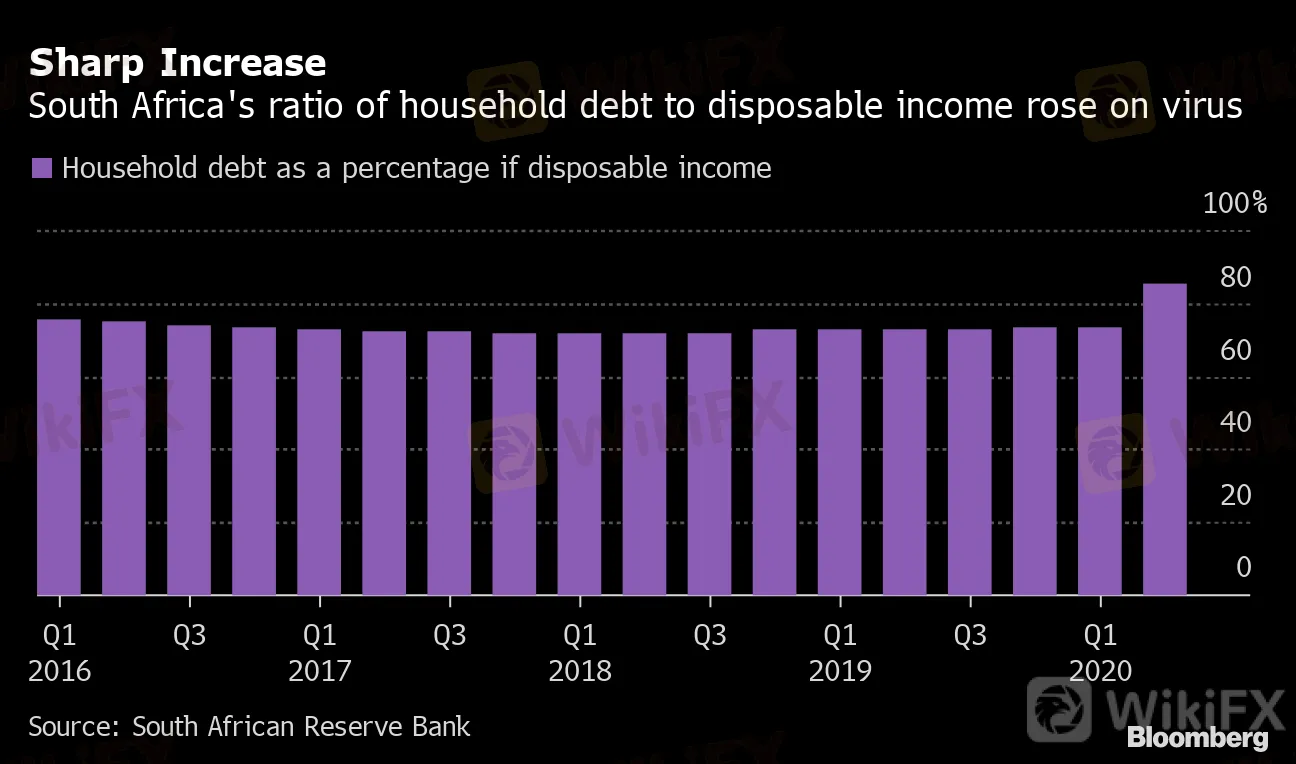简体中文
繁體中文
English
Pусский
日本語
ภาษาไทย
Tiếng Việt
Bahasa Indonesia
Español
हिन्दी
Filippiiniläinen
Français
Deutsch
Português
Türkçe
한국어
العربية
South African Household Debt Drops First Time in 18 Years
Abstract:South African household debt fell for the first time in almost two decades in the second quarter as strict restrictions to limit the spread of the coronavirus affected spending and savings patterns.
South African household debt fell for the first time in almost two decades in the second quarter as strict restrictions to limit the spread of the coronavirus affected spending and savings patterns.
Household debt dropped to 2.27 billion rand ($132 million) from 2.3 billion rand in the previous quarter, according to central bank data. Thats the first time the measure declined since the third quarter of 2002 and is consistent with a sharp contraction in nominal spending and a decrease in the outstanding balances of most categories of credit extended to households, the South African Reserve Bank said in its Quarterly Bulletin released Tuesday.
Sharp Increase
South Africa's ratio of household debt to disposable income rose on virus
Source: South African Reserve Bank

Still, the ratio of household debt to nominal disposable income jumped to 85.3% from 73.6% in the three months through June. Statistics agency data due later Tuesday is expected to show that the unemployment rate rose to a record 34.9% in the second quarter as many firms reduced staff or closed down permanently because of the restrictions.
Read more: Skilled Workers Seek Jobs on the Streets of South Africa
82 Months and Counting
South Africa's economy is stuck in the longest downward phase since 1945
Source: South African Reserve Bank

A nationwide lockdown restricted activity in Africas most industrialized economy from March 27 and led to an annualized quarter-on-quarter contraction of 51% in gross domestic product in the three months through June. While a gradual and phased reopening of the economy began from May 1, business and consumer confidence continue to languish at multi-year lows.
South Africas economy entered an 82nd month of a weakening phase in September, extending its longest downward cycle since World War II, according to central bank data.
Portfolio outflows fell to 54.8 billion rand from a record 97.6 billion rand in the previous quarter. That was due to net sales of debt and equity securities by non-residents, as well as the redemption of two government bonds valued at $500 million and 30 billion yen ($284 million).
Foreign direct investment inflows totaled 17.4 billion rand, largely due to debt funding that international companies provided to their South African subsidiaries.
(Central bank corrects figures in second paragraph to billion from trillion)
Disclaimer:
The views in this article only represent the author's personal views, and do not constitute investment advice on this platform. This platform does not guarantee the accuracy, completeness and timeliness of the information in the article, and will not be liable for any loss caused by the use of or reliance on the information in the article.
WikiFX Broker
Latest News
The Withdrawal Trap: How Scam Brokers Lure Victims into Paying More
FCA to Investors: Think Twice Before Trusting These Brokers
Trump\s tariffs: How could they affect the UK and your money
Trump gambles it all on global tariffs he\s wanted for decades
TradingView Brings Live Market Charts to Telegram Users with New Mini App
Trump tariffs: How will India navigate a world on the brink of a trade war?
Interactive Brokers Launches Forecast Contracts in Canada for Market Predictions
Authorities Alert: MAS Impersonation Scam Hits Singapore
Stocks fall again as Trump tariff jitters continue
IG Group Acquires Freetrade for £160M to Expand UK Investment Market
Currency Calculator







